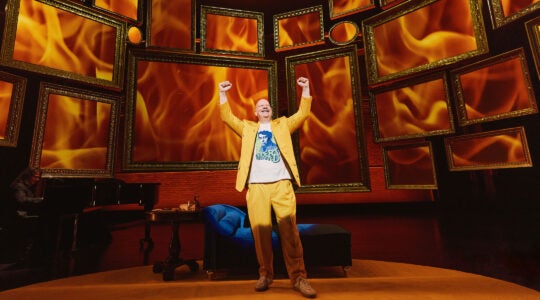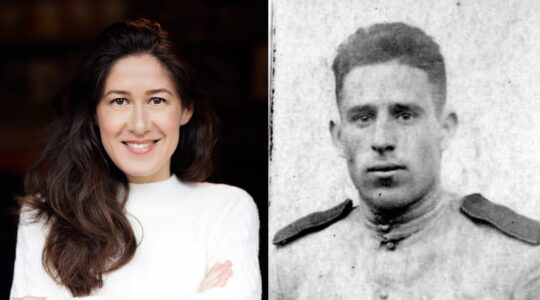As residents of Sheldon Silver’s 65th Assembly District prepare to vote in a special election for his replacement, one of the key concerns for Jewish inhabitants of the Lower East Side is how big a hit, in terms of level of services, their largely Orthodox community will take.
The special election is scheduled for Tuesday, April 19, the same day as the state’s Democratic and Republican primaries, and includes four candidates, none of them members of the area’s Jewish community. Silver, an Orthodox Jew who grew up in a Lower East Side tenement, represented the area in the State Assembly for nearly 40 years and served as speaker of that body for 21 of them, making him one of the most powerful politicians in the state. But he resigned from the speaker’s position at the beginning of last year after he was indicted on federal corruption charges and was removed from office last November after he was convicted. He is due to be sentenced this week.
With his fall from power came fears on the part of Jewish communal leaders that the millions of dollars of funds he steered toward local agencies and institutions, many of them Jewish, would drop precipitously. Although precise figures are hard to come by, one candidate for his seat — Yuh-Line Niou of the Working Families Party — said her understanding is that Silver distributed $1.2 million for services and programs in his district each year, compared to the $85,000 a year a freshman legislator can disperse.
It’s a subject that at least some Jewish leaders in the neighborhood are reluctant to discuss. Of the four leaders contacted in the past few days by The Jewish Week, including Heshy Jacob, chairman of United Jewish Council of the East Side, all declined to comment or said they were unavailable. The other three were Rabbi Zvi Romm, the council’s president and spiritual leader of the Bialystoker Synagogue; Alan van Capelle, president and CEO of the Educational Alliance; and Bonnie Dimun, executive director of the Museum at Eldridge Street. All three agencies were among those that benefited from Silver’s clout.
Speculating on their reluctance to talk, Ester Fuchs, a professor of political science at Columbia University and director of its Urban and Social Policy Program, pointed out that the Jewish community, as well as other groups, gained enormously from Silver’s power.
But, she said, “this is something you don’t want to brag about in the political arena. In making the argument for that sort of arrangement, she added, “the subtext is that, ‘Oh, we have to elect a Jewish representative for this district so that Jews can benefit disproportionately.’”
Another observer, Ezra Friedlander, said Silver’s departure has “huge implications” for the city’s entire Jewish community, even beyond the Lower East Side.
“Every elected official brings their own style based on who they are and their background,” said Friedlander, a political consultant active in the chasidic community. As an observant Jew, he continued, Silver “obviously possessed a certain sensitivity” about his community that other officials don’t necessarily share.
Candidates from other backgrounds can certainly do a good job at representing a Jewish population, Friedlander said, but said the presence in Albany of a figure with Silver’s sensibilities could mean something.
Meanwhile, the contest to replace Silver is bringing the district’s demographic changes into sharp relief. The area draws from four pools of voters: an aging Jewish population and a growing Latino community on the Lower East Side; a burgeoning Asian neighborhood around Chinatown; and a surge of affluent professionals in Battery Park City and the financial district. Estimates of the Asian population range as high as 42 percent, while other studies show the Hispanic population at 20 percent, the black population at 3 percent, and the non-Latino white population at 43 percent.
In 2010, the Jewish population of the Lower East Side was about 9,000 — roughly 6.8 percent of the total district, according to David Pollock, associate executive director of the Jewish Community Relations Council of New York, who noted that by any measure, it’s declining. That said, he noted that evidence exists that the number of Jews in other parts of the 65th Assembly District, including the Wall Street area, may be growing. In addition, a good portion of the young hipsters who’ve moved to the Lower East Side in recent years are also Jewish, although many are unengaged with the Jewish community or occupy a middle ground.
Pollock and others said the issues dividing the area run not along racial, ethnic or religious lines, but along class lines, as gentrification threatens longtime residents of the district. “The tensions in those neighborhoods are the same we hear about everywhere,” Pollock said.
But Hank Sheinkopf, a New York political consultant, said “ethnic tensions always surface in every neighborhood that’s not fully gentrified.” Various groups are competing for government resources, he said. “Those are limited, and the competition has always been significant.”
One issue that divided the community for years involved how to handle 20 acres of barren land along the southern side of Delancey Street, where the city tore down blocks of rundown apartment buildings in 1967. Known as the Seward Park Urban Renewal Area, the site used to be home to more than 1,800 low-income families, mostly Puerto Rican, who were evicted from their apartments and promised a chance to return. But the New York Times reported in 2014 that Silver and his political allies acted for years to block the construction of any affordable housing at the site, “which would have altered the demographics of the neighborhood and put Mr. Silver’s political base in question.”
The issue is now resolved as the city moves ahead with plans to develop the area as a mixed-used complex. Guidelines already accepted by all factions of the community call for the construction of 800 to 1,000 apartments, 20 percent of which will be set aside for low-income tenants and another 10 percent of which will go to low-income seniors. But bitterness remains.
The district’s residents are now being courted by four candidates for Silver’s seat: In addition to the Working Families Party’s Niou, the candidates are Alice Cancel, running on the Democratic line; Lester Chang, the Republican candidate; and Dennis Levy, the Green Party candidate.
Whomever wins the special election will have to run for their seat again in an open party primary in September and then, if the Republican Party fields a candidate, in the general election next November.
The New York Jewish Week brings you the stories behind the headlines, keeping you connected to Jewish life in New York. Help sustain the reporting you trust by donating today.




